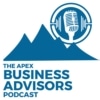Book Club #32: Built to Last: Successful Habits of Visionary Companies, by Jim Collins and Jerry I. Porras
 Even though Jim Collins wrote Good to Great years after he finished Built to Last, he considers the former a prequel to the latter. It’s one thing to make a company great, but to make it a visionary one that lasts for generations, that’s an enduring accomplishment. The same research-driven conclusions frame the important lessons of this still-relevant text.
Even though Jim Collins wrote Good to Great years after he finished Built to Last, he considers the former a prequel to the latter. It’s one thing to make a company great, but to make it a visionary one that lasts for generations, that’s an enduring accomplishment. The same research-driven conclusions frame the important lessons of this still-relevant text.
Clock Building vs Time Telling
“Having a great idea or being a charismatic visionary leader is time telling; building a company that can prosper far beyond the presence of any single leader and through multiple product life cycles is clock building.” With a business press that focuses on big personalities it’s sometimes easy to miss companies that don’t need charismatic leaders to prosper…because they’ve got a culture that survives, even thrives without needing to be pushed from the top.
This doesn’t mean that visionary leaders should be ignored. A helpful example might be Jack Welch. Welch got a lot of press in his day, but did you know that relative to his other predecessors at GE he came in second place in ROE and fifth place on average cumulative stock returns relative to the market and its biggest competitor, Westinghouse? Welch was effective…but so were his predecessors. He simply kept up with a pace that had already been set for him.
If you want to go to deeper with other examples like Welch, the authors dedicate Chapter 8 to homegrown management: Welch only ever worked at GE before ascending to CEO. His achievements are just as attributable to the culture he grew up in as his own personal skill and charisma.
BHAG
Just as many people know the term “right people on the bus” from another Collins and Porras book, they probably also know the abbreviation BHAG to stand for “big hairy audacious goal.” That term originated in this book as a characteristic of visionary companies. A couple of the BHAGs highlighted in the text include:
- Boeing betting the farm on the 707 and 747, projects which would have ended the company if unsuccessful.
- Sony creating a pocket radio for consumers when no one thought transistors had value outside of military applications.
A BHAG should be so clear and compelling that it requires little to no explanation and even if not fully achieved, can set the company up for a future success. The other danger of achieving a BHAG is letting complacency set in from a “we’ve arrived” mentality. Companies with no history of BHAGs don’t become generational, visionary enterprises.
Try a Lot of Stuff
While small business owners may be aware and comfortable with the “throw stuff against the wall and see what sticks” school of thought, they may not know that this is also a characteristic of generational visionary companies as well. Some fascinating stories in Chapter 7, which focuses on on this topic, include:
- Johnson & Johnson received a letter from a physician complaining about patient skin irritation from certain medicated plasters (at this time that was J&J’s primary business). The company’s director of research responded by sending a packet of soothing Italian talc to apply on the skin. That same director encouraged the company to include a small can of talc for free with certain products. People started asking for the talc directly and this “accident” grew to become, at one point, 44% of J&J’s revenues.
- In 1892 an American Express president took a European vacation and found that his letters of credit weren’t easily translatable into the cash he needed. When he returned he vowed to fix the problem, thinking that if he had challenges, what might everyday people without his connections have? The American Express Travelers Cheque was born and pointed towards the financial services future of the business, which was then operating a secured cash-shipping business.
- How Wal-Mart greeters originated from one store manager’s concern with shoplifting: greeters made honest people feel welcome and put shoplifters on notice that someone would see them if they tried to walk out with stolen merchandise.
- The “give it a try, and quick!” mentality at 3M that led to their adhesive tapes, waterproof sandpaper, and Post-It notes.
By focusing on empowering staff at all levels rather than trying to direct everything from the C-suite, these companies harnessed the power of their people.
Final Thoughts
There are many great lessons in the book, but perhaps the most important one for our age that has seen multiple (and persistent) scandals in an environment in which “maximizing shareholder value” has gained currency as an investing philosophy is the contrarian finding of Collins and Porras in the text: “[W]e did not find maximizing shareholder wealth or profit maximization as the dominant driving force or primary objective through the history of most of the visionary companies. They have tended to pursue a cluster of objectives, of which making money is only one — and not necessarily the primary one.” The shining example of this is the original 1943 Credo of Johnson and Johnson, referenced in Chapter 3 of this text and which J&J went back to when deciding what to do about it’s now-famous Tylenol recall, which cost the company almost $100M, but was what they considered the right thing to do.
You can find the most recent iteration of the credo here.
We can’t pretend to be able to help you build a visionary company…that’s why you should read this book! But we can help you figure out what you need to tweak and improve in your business to take it from not sellable to sellable. Let us know how we can help.


